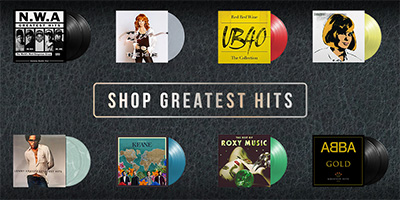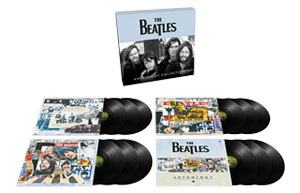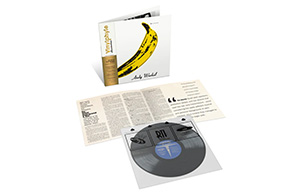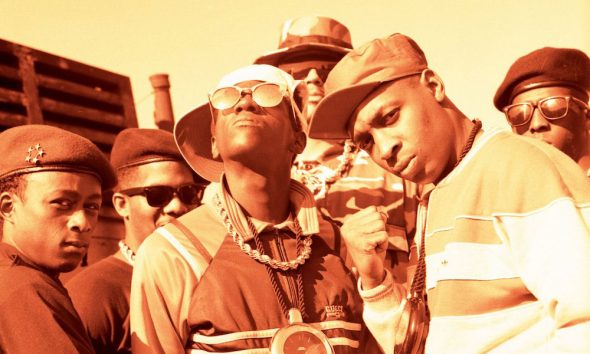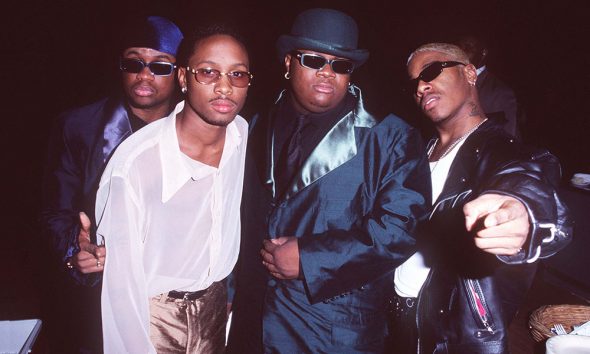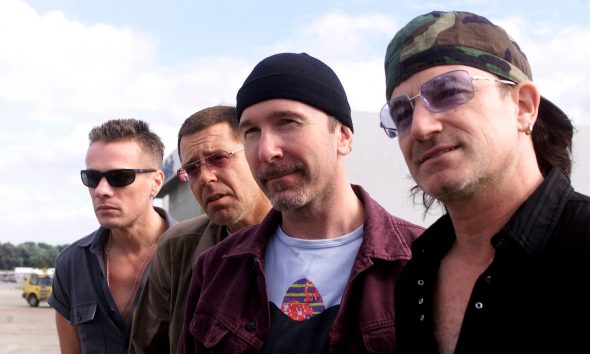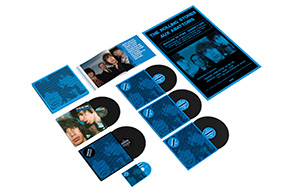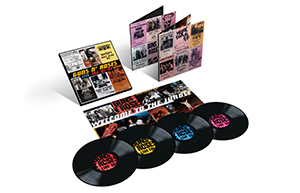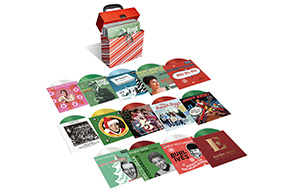The Doors
Between 1966 and 1971, The Doors were arguably America’s most important and successful rock group. With their ultra-charismatic and wildly unpredictable singer, The Doors’ music soundtracked the West Coast as it veered from psychedelic bliss to riotous rebellion.
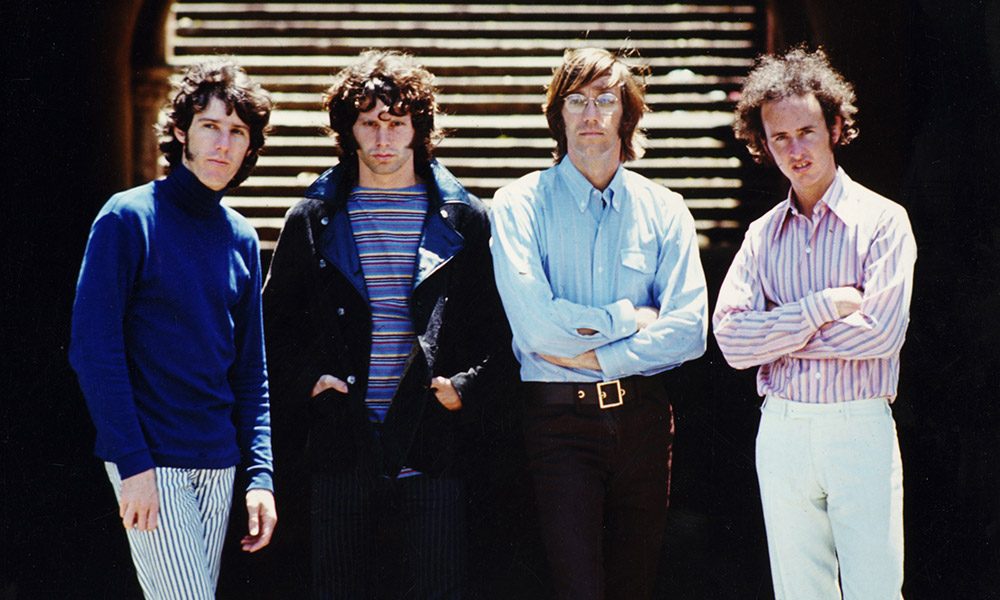
Between 1966 and 1971, The Doors were arguably America’s most important and successful rock group. With their ultra-charismatic and wildly unpredictable singer – those traits often go hand in hand – Jim Morrison functioning as a sex symbol, shaman and talisman for rebellion, The Doors’ music soundtracked the West Coast as it veered from psychedelic bliss to riotous rebellion.
As Morrison became vilified for his antics and his frequent descents into alcohol abuse, The Doors were faced with internal tensions that only made their albums stronger. The self-titled debut and its follow-up, Strange Days (both 1967), were object lessons in great songwriting with a surprisingly diverse musical backdrop provided by keyboardist Ray Manzarek, guitarist Robby Krieger and drummer John Densmore. Latin rhythms, jazzy vamps and upgraded garage punk were in the mix, with Morrison a catalyst for what became a kind of siege mentality that culminated in his arrest in Miami, in 1969, for alleged exposure (incitement to riot was closer to the mark).
That event at the Dinner Key Auditorium threatened to kill the group yet they returned with Morrison Hotel and hit the road again for a tour documented on Absolutely Live. Morrison’s death in Paris in highly suspicious circumstances – most likely from a heroin overdose – coincided with the classic final album of his 27-year-tenure on this planet, the blues-drenched LA Woman, whose ‘Riders On The Storm’ became his epitaph.
The Doors’ legend and reputation have fluctuated wildly ever since, with many claiming that Jimbo was more sham than shaman, but the real fans have never bought into that. If one overlooks the hype – much of it of the singer’s wilful tongue-in-cheek making – the recorded evidence (well over 100 million sales) is clear. The music scene would have been a lot less colourful without The Doors – and Morrison in particular.
Formed in Los Angeles, in 1965, by UCLA film alumni Jim Morrison and Ray Manzarek, the classic Doors line-up reached fruition when Densmore and Krieger (incidentally, the real Los Angelinos) swapped Transcendental Meditation for drum and guitar duties, respectively. Morrison was from Florida, the son of a high-ranking naval officer, but preferred to be of no fixed abode, while the elder Manzarek hailed from Chicago and fashioned the group’s style in the beginning.
Working their way through LA clubs such as the London Fog and the Whisky A Go-Go, the quartet came to the attention of Elektra boss Jac Holzman, who made them his star act and top priority. The Doors had the first billboard ads on the Sunset Strip, for their self-titled debut album, which included ‘Break On Through (To the Other Side)’ and the iconic hit ‘Light My Fire’, the latter of which sold over a million copies and became the group’s first No.1. Written in the main by Krieger, with lyrical tweaks from Morrison, ‘Light My Fire’ was their signature tune, though it was sometimes viewed as a bugbear by Jim, who wrestled with the transition from a teenybop idol to serious artist.
It wasn’t all three-minute pop songs. ‘The End’ (whose Greek-tragedy motif got them thrown out of the Whisky) and ‘When the Music’s Over’ were designed to space out. However, those wild trips were a toned down for Waiting For The Sun (1968), an almost pastoral affair with wake-up moments like ‘Five To One’ and ‘The Unknown Soldier’ prefiguring both the demonic Charles Manson Family crimes and the growing tide of unrest over the Vietnam War.
Morrison himself seemed ambivalent about protest and politics, preferring the pub to the polemic by nature and poesy above all, hence his long-form ‘Celebration Of The Lizard’, a song never quite resolved in the studio but an occasional treat for the live crowd.
Fans were flummoxed by The Soft Parade (1969), which arrived at a time when the musicians in the band were using internal democracy to try and rein in Jim’s more outrageous antics. The album’s jazz and blues bent were seen as neither fish nor fowl, but fanatics love the sprawl of the title track, in which Morrison borrows from TS Eliot, and James Frazer’s The Golden Bough (in the ‘Not To Touch The Earth” section). Elsewhere, the light spring of ‘Touch Me’, ‘Easy Ride’ and the elegiac ‘Wishful Sinful’ found the singer crooning his best Frank Sinatra: a baritone in brown leather pants.
Recorded on the rebound from the Miami incident, 1970’s Morrison Hotel was a thrilling success. ‘Roadhouse Blues’, ‘Peace Frog’, ‘Land Ho!’ and ‘Maggie M’Gill’ cast Morrison as a part renegade and part sea salt: a hard-drinking, devil-may-care rogue with a touch of Celtic blarney to leaven his American poet mystique. Widely praised in the States, where Creem’s Dave Marsh called it “the most horrifying rock’n’roll I have ever heard when they’re good, they’re simply unbeatable”, Morrison Hotel was also The Doors’ highest-charting album in the UK, where it peaked at No.12.
Appearing that summer, Absolutely Live (later repackaged as In Concert) is a warts-and-all account of shows performed in New York, Philadelphia, Pittsburgh and Detroit. With their star still high on the East Coast (elsewhere, promoters were wary of leasing their halls to Morrison), the set offers insight to the band at the peak of their powers, with exemplary versions of Bo Diddley’s ‘Who Do You Love?’, Brecht and Weill’s ‘Alabama Song (Whisky Bar)’ and the band’s spooked original ‘Universal Mind’ punctuating the sonic mayhem. The ringside atmosphere is palpable, even though the recordings were made on rudimentary eight-track equipment.
1970’s studio compilation set 13 (note the image of occult master Aleister Crowley on the rear cover) was one of those over-my-dead-body releases for Morrison, who had earlier fought against allowing ‘Light My Fire’ to appear in a Buick Opel commercial. (Both, in fact, happened.)
Come to the end of the year, Morrison was in a poor physical and emotional state, and long-time producer Paul A Rothchild left the fold. Classifying initial vamps for ‘Riders On The Storm’ and ‘Love Her Madly’ as “terrible cocktail music lounge shit”, he refused to produce the album that would become LA Woman, though some fans felt that Rothchild had taken the eye off the ball once he became involved with Janis Joplin – a powerhouse singer who was, incidentally, a drinking spar of Morrison’s.
Ironically, both of those tracks were released as singles – and both were hits, though ‘Riders On The Storm’ found posthumous success after Morrison died in Paris on 3 July 1971. If that song – partially influenced by serial killer Billy Cook – emphasised the dark side of The Doors, then LA Woman’s title track was a gleeful paean to the City Of Angels’ noir underbelly. In his final role, Morrison had cast himself as Mr Mojo Risin’, the anagram of his name that became a latter-day moniker to match earlier soubriquets The Lizard King and teen tag King Of Orgasmic Rock. Perhaps he was an amalgamation of all three.
After Morrison’s death, the three remaining Doors continued manfully with the underwhelming Other Voices and Full Circle, both marked by great playing but lacking their former leader’s fire.
Seven years later, they rectified that to an extent with An American Prayer, a mix of audio collage including Morrison’s poetry recitals, jam sessions and excerpts from the singer’s unreleased film HWY: An American Pastoral. The latter became the template for the 2009 documentary When You’re Strange. Incidentally, Morrison had approached soundtrack maestro Lalo Schifrin to score his celluloid adventures and his free form verse, before left the country to join his partner Pamela Courson in Paris.
Since his death, The Doors have reconvened in various live guises, while several compilations and a wealth of live albums from the vaults keep fans sweet. Recommended are Boot Yer Butt! The Doors Bootlegs, Live In Detroit, Live In Boston and Live At The Matrix 1967, along with the lavish box set London Fog 1966, which us back to the beginning when blues standards littered the set and Morrison was still so shy he often performed with his back to the audience.
That didn’t last. In hindsight, one might think Morrison was on a trajectory heading to disaster; whether he may ever have cleaned up his act, no one knows. What is known is that The Doors left behind a glorious legacy of six studio albums that can always be played, and will repay in earnest the entreaty: “Break on through to the other side.”
Max Bell





